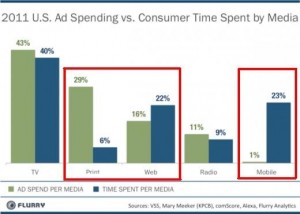Some solid thoughts here about the advantages of digital-native media versus “old” media. Conclusion: It’s hard to adapt to the changing media landscape when you’re busy running your existing business…you know, the one that pays the bills. Because even significant gains in magazines’ digital circ means they’re up to a whopping 1 percent of total circ. Yes, 1 percent. Rather unbelievable, given how often the media talks about what’s next and the mythical untold opportunities for tablet reading and product/brand integration.
And that would be why “old” media companies need to focus on their core business.
